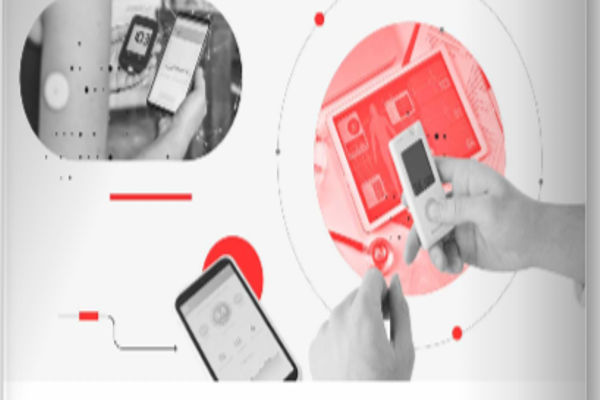From smartwatches that monitor heart rhythms to connected insulin pumps that communicate with smartphones, the Internet of Things (IoT) is transforming the very fabric of healthcare. As of 2025, global spending on IoT in healthcare is projected to exceed $305 billion, according to Frost & Sullivan, indicating a massive digital shift driven by aging populations, chronic disease prevalence, and the push toward value-based care.
But IoT in healthcare is more than just wearable devices—it’s an entire ecosystem of interconnected sensors, cloud platforms, AI algorithms, and real-time data streams that are revolutionizing diagnostics, treatment, patient engagement, and hospital operations.
What Is IoT in Healthcare?
The IoT in healthcare refers to a network of physical devices embedded with sensors and connectivity features that collect, transmit, and sometimes analyze health-related data.
Key components include:
- Wearables (e.g., fitness bands, ECG monitors)
- Smart medical devices (e.g., connected inhalers, glucose monitors)
- Remote Patient Monitoring (RPM) tools
- IoT-enabled hospital infrastructure (e.g., smart beds, asset tracking systems)
- AI and cloud computing for data analytics
Together, these devices offer real-time monitoring, proactive interventions, and data-driven decision-making.
Market Growth and Adoption Trends
Global Market Snapshot (2025)
- Market Size: $305 billion
- CAGR (2023–2030): 25.8%
- Top regions: North America, Europe, Asia-Pacific
- Leading sectors: Remote monitoring, clinical workflow automation, asset tracking
Post-COVID Momentum
COVID-19 accelerated IoT adoption. Telehealth, wearable vitals monitoring, and contactless hospital tools became necessities. According to McKinsey, IoT-enabled healthcare solutions grew 3x faster in 2020–2023 than in the previous decade.
Key Use Cases in Healthcare
Remote Patient Monitoring (RPM)
IoT allows continuous tracking of blood pressure, oxygen saturation, glucose levels, and ECG—all from a patient’s home. These devices reduce hospital readmissions and allow early interventions.
Smart Hospitals
IoT transforms hospital operations:
- Smart beds detect patient movement
- RFID-enabled inventory tracking prevents supply shortages
- Environmental sensors optimize lighting, HVAC, and sanitation
Example: Mount Sinai Hospital (New York) uses IoT sensors to track equipment usage, cutting costs by $1.2 million annually.
Medication Adherence
Smart pill bottles and connected dispensers alert patients and providers about missed doses—especially useful for elderly or mental health patients.
AI-Powered Diagnostics
IoT-generated data feeds AI algorithms to detect anomalies and patterns, supporting diagnoses in areas like:
- Diabetic retinopathy
- Parkinson’s disease tremors
- Seizure prediction
Challenges in IoT Healthcare Adoption
Data Security & Privacy
Healthcare data is a prime target for cyberattacks. IoT devices often lack robust security, creating vulnerabilities.
- HIPAA compliance is essential in the U.S.
- GDPR governs personal health data in Europe
“A single unsecured IoT device can compromise an entire network,” warns Dr. Reena Bhardwaj, cybersecurity lead at India’s AIIMS.
Interoperability
Devices from different manufacturers often struggle to integrate with hospital systems like EHRs (Electronic Health Records). Standards like HL7 FHIR are addressing this but adoption is still fragmented.
Regulatory Complexity
Getting approvals from agencies like the FDA or CE Mark can slow innovation, particularly for devices that involve algorithms or autonomous decisions.
Cost and ROI Uncertainty
High initial costs for deployment, integration, and training can deter smaller healthcare providers from investing in IoT solutions.
Leading Companies in IoT Healthcare (2025)
| Company | Focus Areas | Flagship IoT Offering |
| Medtronic | Cardiology, Diabetes | Guardian Connect (CGM system) |
| GE Healthcare | Imaging, Patient Monitoring | CARESCAPE platform |
| Philips | RPM, Telehealth | HealthSuite IoT Cloud |
| Siemens Healthineers | Smart Imaging, AI | syngo.via with IoT-enhanced analytics |
| Apple | Wearables, Health Data | Apple Watch with ECG and oxygen sensor |
| Qualcomm Life | Wireless health tech | 2net Platform |
| Tata Elxsi | Device-to-cloud solutions | IoT frameworks for Indian medtech OEMs |
India’s Growing IoT Healthcare Ecosystem
India is experiencing a booming digital health transformation, driven by:
- Ayushman Bharat Digital Mission (ABDM)
- Rise of medtech startups like Dozee, Biosense, and HealthPlix
- Public-private pilots in remote villages using IoT for maternal health and TB monitoring
Future Outlook: What Lies Ahead
What to Expect by 2030
- 5G-Powered Telehealth: Faster, low-latency data transfer for remote surgeries and mobile clinics.
- Edge AI: Real-time analytics on-device to reduce cloud dependency.
- Digital Twins of Patients: Simulated replicas based on real-time IoT data for personalized treatment.
- Blockchain for IoT Security: Immutable logs for access and updates.
Conclusion: A Connected Healing Ecosystem
IoT in healthcare is no longer a futuristic concept—it’s already saving lives, cutting costs, and redefining the provider-patient relationship. Yet, for it to fulfill its promise, stakeholders must address security, scalability, and interoperability concerns.
The next frontier in medicine is not only in laboratories or surgery rooms—it’s in the invisible data streams flowing through smart devices, bringing precision, accessibility, and empathy to every corner of care.
Reading & References
- Frost & Sullivan, “Global Healthcare IoT Market Forecast 2025”
- WHO Digital Health Strategy Reports
- McKinsey & Co. – “Connected Health: The Future of Healthcare”
- IEEE IoT Journal – April 2025 Edition
- Government of India – ABDM & NITI Aayog White Papers

















